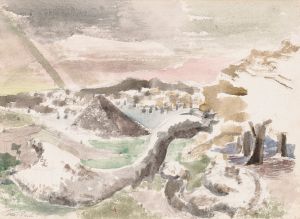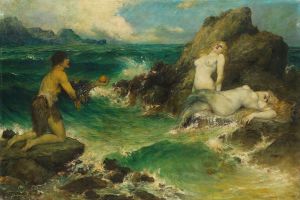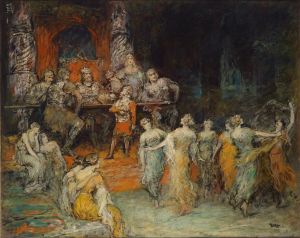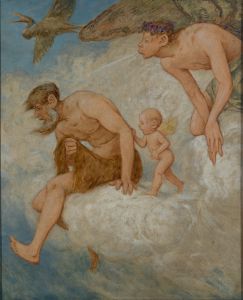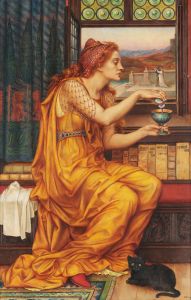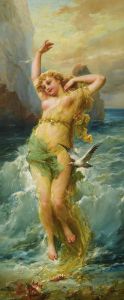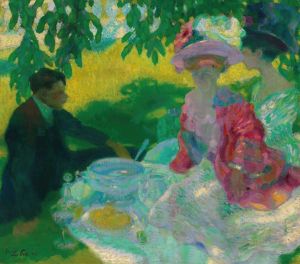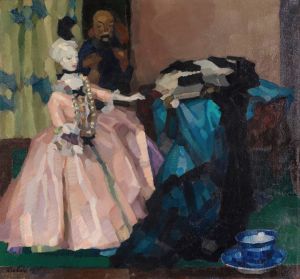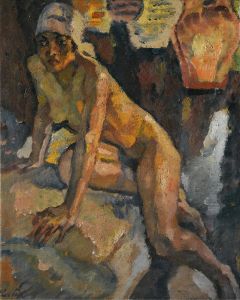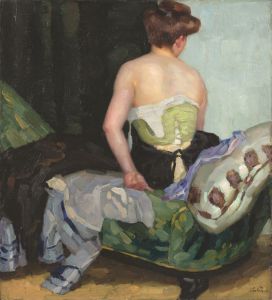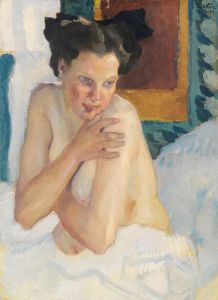
Studie zu Aschenbrödel
A hand-painted replica of Leo Putz’s masterpiece Studie zu Aschenbrödel, meticulously crafted by professional artists to capture the true essence of the original. Each piece is created with museum-quality canvas and rare mineral pigments, carefully painted by experienced artists with delicate brushstrokes and rich, layered colors to perfectly recreate the texture of the original artwork. Unlike machine-printed reproductions, this hand-painted version brings the painting to life, infused with the artist’s emotions and skill in every stroke. Whether for personal collection or home decoration, it instantly elevates the artistic atmosphere of any space.
Leo Putz was a prominent German painter associated with the Munich Secession, an art movement that emerged in the late 19th century as a response to the conservative art establishment in Germany. Putz was known for his vibrant use of color and his ability to capture light, which made his works stand out during his time. One of his notable works is "Studie zu Aschenbrödel," which translates to "Study for Cinderella."
"Studie zu Aschenbrödel" is a work that reflects Putz's interest in capturing the subtleties of human expression and the nuances of narrative art. Although specific details about this particular painting are limited, it is known that Putz often drew inspiration from literary and mythological themes, which were popular subjects among artists of the Secessionist movement. The title itself suggests a connection to the classic fairy tale of Cinderella, a story that has been interpreted in various forms across cultures and time periods.
Putz's style was characterized by a blend of Impressionism and Art Nouveau, which is evident in his use of flowing lines and a soft color palette. His works often depicted scenes of leisure and beauty, focusing on the human figure and its interaction with the surrounding environment. This approach can be seen in "Studie zu Aschenbrödel," where Putz likely explored the emotional and psychological dimensions of the Cinderella story, capturing the essence of transformation and aspiration.
Throughout his career, Putz was celebrated for his ability to convey mood and atmosphere through his paintings. His works were exhibited widely, and he became a respected figure in the art community. Putz's contributions to the Munich Secession were significant, as he helped to push the boundaries of traditional art and encouraged a more modern approach to painting.
The Munich Secession, of which Putz was a part, was instrumental in promoting new artistic ideas and providing a platform for artists who sought to break away from the academic constraints of the time. This movement played a crucial role in the development of modern art in Germany, and Putz's work, including "Studie zu Aschenbrödel," exemplifies the innovative spirit that defined this era.
While detailed information about "Studie zu Aschenbrödel" specifically may not be extensively documented, it is clear that the painting fits within the broader context of Putz's oeuvre and the artistic trends of the early 20th century. His ability to blend narrative content with a modern aesthetic made his work appealing to contemporary audiences and continues to be appreciated by art enthusiasts today.
In summary, "Studie zu Aschenbrödel" by Leo Putz is a reflection of the artist's skill in merging narrative themes with a modern artistic style. Although specific details about the painting are scarce, it remains an important part of Putz's body of work and the Munich Secession movement. Through his art, Putz captured the imagination of his time, leaving a lasting impact on the world of modern art.





